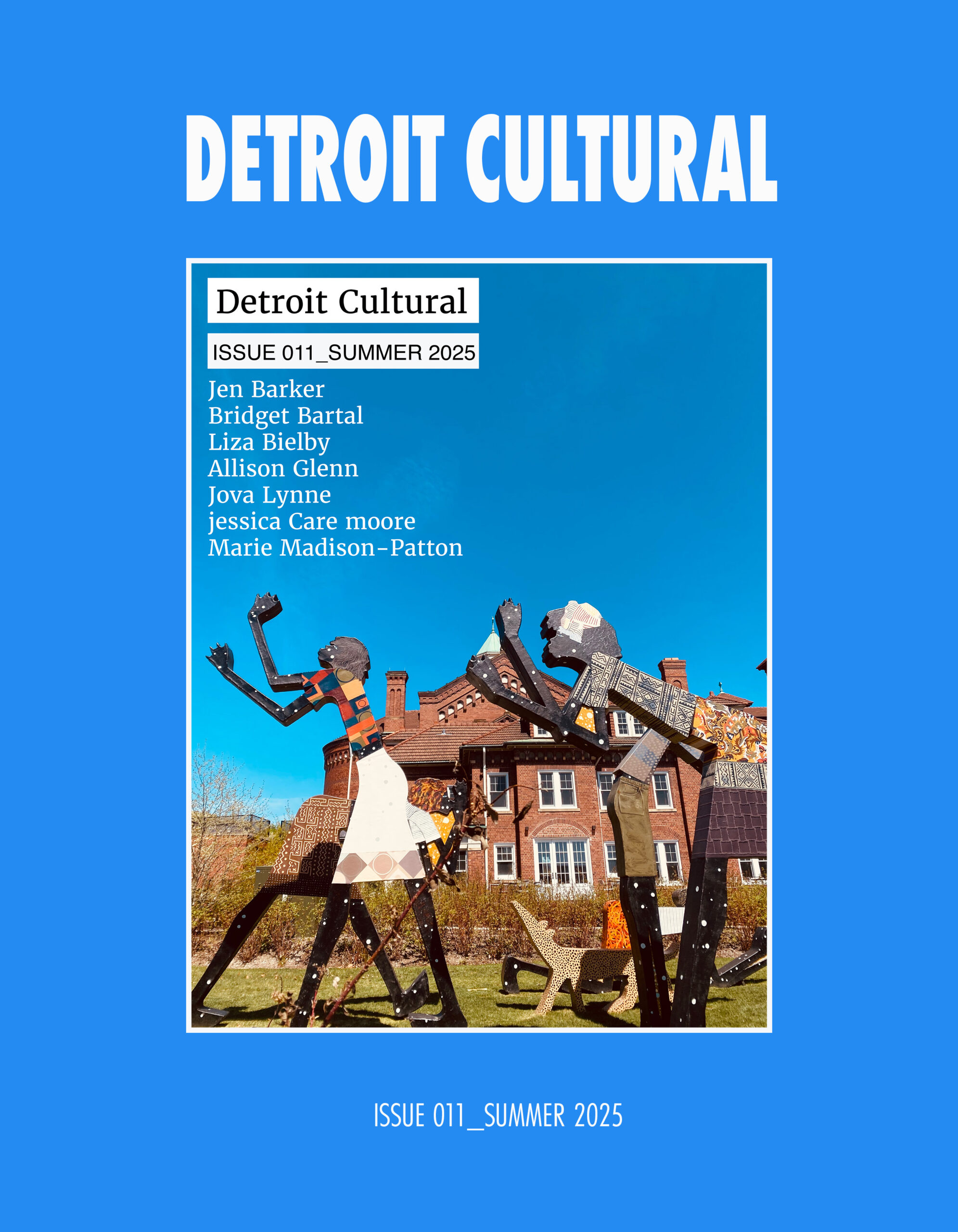
What are the roles of art in a democratic society?
Detroit Cultural’s ISSUE 011_SUMMER 2025 attempts to pry at this question through six new interviews with artists, curators, museum directors, writers, arts educators, and non-profit art institutions.
At a moment in which arts funding, public media, and education curricula are under direct attack from the federal government, what are the purposes of art and culture in a democracy? In a world in which culture mediates our very sense of political and social reality, whose culture, values, and ideologies are allowed to be treated as natural, neutral, and normal? Whose voices are allowed to be heard inside museums, classroom textbooks, and public media, and whose are rendered as, “too political”? And of course– what is more political than the construction of a false neutral and the closing off of any alternatives?
Earlier this year the Trump Administration began its cancellation of the National Endowment for the Arts (NEA) grants. Artists and art institutions, including some featured in this issue, received emails in May alerting them that “the NEA is updating its grantmaking policy priorities to focus funding on projects that reflect the nation’s rich artistic heritage and creativity as prioritized by the President. Consequently, we are terminating awards that fall outside these new priorities.” Two months prior, on March 27 Trump released an executive order entitled “Restoring Truth and Sanity to American History” which aims to eliminate identity-based approaches to American History in favor of a false neutrality in which we are all supposedly color blind and unaffected by the material realities of American history that have been so deeply shaped along lines of identity.
Just this week in which our eleventh issue is being published, American artist Amy Sherald has cancelled the Smithsonian iteration of her career retrospective in an act of protest against possible censorship of a painting featuring a transgender woman posed as the Statue of Liberty. The Trump Administration reported, “Vice President Vance has been leading the effort to eliminate woke indoctrination from our beloved Smithsonian museums.”
In May the Trump Administration also opened up applications for artist proposals for the 2026 Venice Biennale, featuring new guidelines that emphasize, “American values” while restricting work that promotes, “Diversity, Equity, and Inclusion”, again forcing the question–in a democratic society, whose values are lifted above others as supposedly more “American”? Are “Diversity, Equity, and Inclusion” inherently un-American?
If culture in its broadest sense–our languages, our customs, the stories and histories we pass down from generation to generation–is what shapes our very sense of identity, our sense of history, our sense of normality and reality, then culture is implicitly political. The role of culture in a fascist society is to uphold the political structures, ideologies, and ways of seeing the world that keep those who are in power, still in power, while negating the possibility of any alternative.
But just what exactly is the role of art and culture in a democratic society?
Andres Serrano’s proposed US pavilion for the Venice Biennale 2026.
